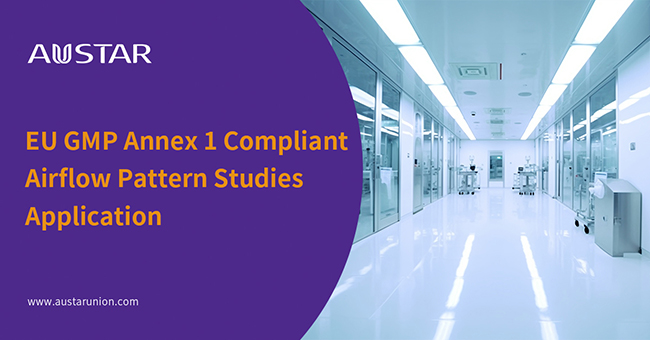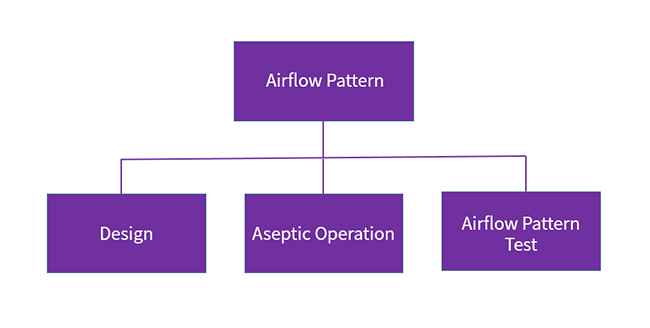EU GMP Annex 1 Compliant Airflow Pattern Studies Application
News & Insights2024-08-29

Integrated solutions

1. Design
Airflow pattern design principles for cleanrooms:
Contaminated air in cleanrooms can be removed quickly by clean air supply, which can reduce air turbulence, prevent the generation of dead legs, accelerate the exhaust of contaminants, and shorten the recovery time of the cleanrooms.
Supply air can be evenly spread in the clean areas to dilute and exhaust the contaminants in a timely manner.
Physical environment requirements such as temperature and humidity, fresh air, and personnel comfort level can be met.
Computational Fluid Dynamics (CFD) simulation software is used for air distribution analysis and optimization:
A reasonable airflow pattern is determined by simulating and comparing the velocity distribution, contaminant concentration distribution, recovery time, etc. of indoor flow fields under different airflow patterns (such as upper supply and bottom return, upper supply and upper return, and displacement ventilation) and different contaminant dispersion sources.
2. Aseptic Operation
Determine key operation points based on risk assessment, such as filling area, stoppering area, capping area, sampling area and infeed area.
Then confirm the operation actions at the key operation points, including component installation, human intervention, track crossing, etc., and define the operation steps and precautions.
Finally, confirm the smoking location and video shooting position (from multiple angles).
3. Airflow Pattern Test
Airflow standards: for each individual test point, in addition to a unified standard, there should also be specific standards for each point, including testing at rest and in operation. A predetermined airflow chart should be drawn in the protocol, either unidirectional or turbulent airflow.
Standards of test methods: specify whether the testing process complies with the standards.
Standards of obtained airflow video recording: testing duration, whether it covers the entire range, and whether it is clear and distinguishable.
Standards of equipment status and smoke status in video recording.
Whether the simulated personnel actions in operation comply with GMP requirements.
Environmental standards: whether the testing environment affects airflow, whether it is in normal working condition, and whether it affects airflow pattern test, etc.
Sterile Drug Quality and Sterility Assurance
A good airflow pattern can protect products, reduce the risks of environmental contamination, and establish a compliant pharmaceutical production environment.
Our Services
AUSTAR Compliance Consulting Services team has provided pharmaceutical enterprises with high-quality protocol design and testing for airflow pattern studies, assisted our clients in confirming the activities related to aseptic operations meet the latest requirements of the EU GMP Annex 1, thereby, ensuring regulatory compliance and product quality safety in the manufacturing of sterile medicinal products.







 Search
Search 中文
中文







